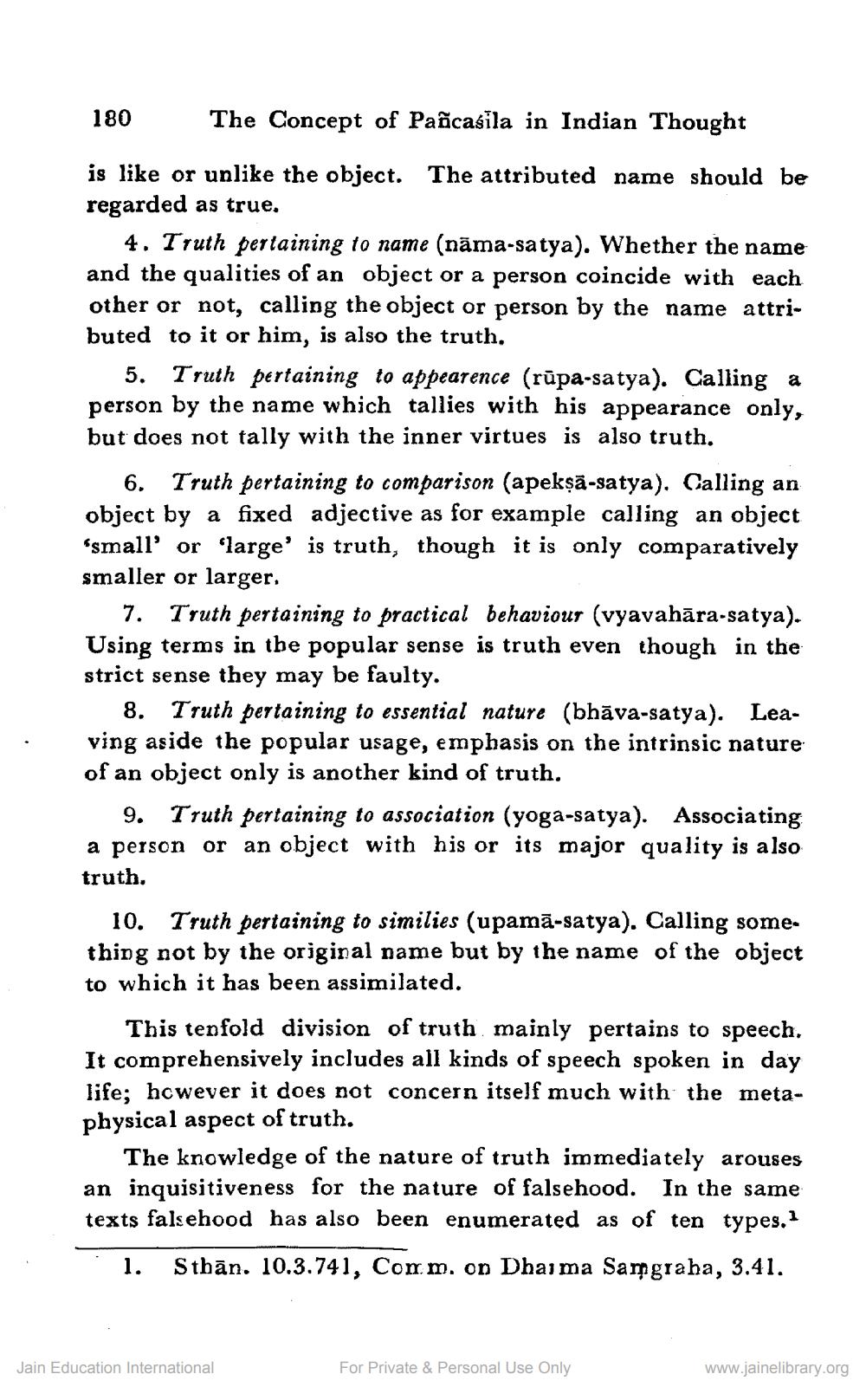________________
180
The Concept of Pañcasila in Indian Thought
is like or unlike the object. The attributed name should be regarded as true.
4. Truth pertaining to name (nāma-satya). Whether the name and the qualities of an object or a person coincide with each other or not, calling the object or person by the name attributed to it or him, is also the truth.
5. Truth pertaining to appearence (rūpa-satya). Calling a person by the name which tallies with his appearance only, but does not tally with the inner virtues is also truth.
6. Truth pertaining to comparison (apekṣā-satya). Calling an object by a fixed adjective as for example calling an object 'small' or 'large' is truth, though it is only comparatively smaller or larger.
7. Truth pertaining to practical behaviour (vyavahāra-satya). Using terms in the popular sense is truth even though in the strict sense they may be faulty.
8. Truth pertaining to essential nature (bhāva-satya). Leaving aside the popular usage, emphasis on the intrinsic nature of an object only is another kind of truth.
9. Truth pertaining to association (yoga-satya). Associating a person or an object with his or its major quality is also truth.
10. Truth pertaining to similies (upamā-satya). Calling some. thing not by the original name but by the name of the object to which it has been assimilated.
This tenfold division of truth mainly pertains to speech. It comprehensively includes all kinds of speech spoken in day life; however it does not concern itself much with the metaphysical aspect of truth.
The knowledge of the nature of truth immediately arouses an inquisitiveness for the nature of falsehood. In the same texts falsehood has also been enumerated as of ten types.
1. Stbān. 10.3.741, Comm. on Dharma Sampgraha, 3.41.
Jain Education International
For Private & Personal Use Only
www.jainelibrary.org




